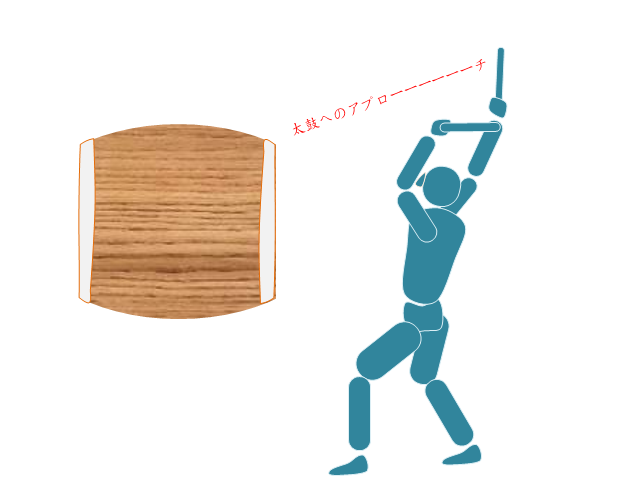I had a bad pain with my left
shoulder some week ago.
I hardly can do closing the door
of refrigerator, taking off shirts, getting on a car, picking bag from one hand
to another and scratching left temple, because of big pain of my left shoulder.
I got it at evening on Saturday and I had spent 2 long terrible nights that I
was jerked by acute pain! (I often roll
over during sleeping.)
On the Monday, doctor said it is arthritis of
left shoulder as result of X-ray check and gave me another painful injection
direct to my joint of left shoulder. !!!!YIPE!!!!
Although, shoulder pain was gone at night of
same day.
I minded the reason of arthritis
of my left shoulder. Soon I started thinking that Playing-taiko may be one
reason. You know, Shoulders move very wide range while you playing our style of
taiko. Especially left stick(bachi) that was grabbed in left hand, is being
banged from back of right ear down to taiko. You have to move many times during
playing taiko. Is this the reason of arthritis? But I have been doing this
moving for 10 years.. After 10 years?! Really?
There is one thing I have to
consider about my motion to care my shoulder.
We off course need to bang
sticks down from as long distance to taiko as possible. Therefore, If you want it
to have long distance from taiko, you need to bend the joint of shoulder to
pull your left arm right far side as best you can. Because our style,
Hachijo-Taiko, is yoko-uchi. (please see some photos.)
However,
if you twist your hip to the right, you can make more distance between stick
and taiko.
In short, flexible moving of
your legs an hip can lead your dynamically playing action of your arms with
sticks. I still don’t know the reason of shoulder pain, but It reminded me that
flexible whole body motion can care shoulder’s strain.
I talked above story to Master
Endo, and he said “Not only wide motions, but also small motions need rhythm of
body include hip”. Wow, I see. I learned one more thing.

























